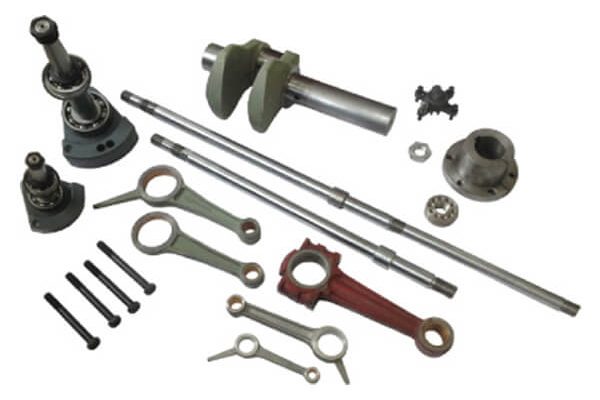Reciprocating air compressors are the quiet workhorses behind busy garages, fabrication shops, and fleet facilities. When they go down, everything slows—lifts, impact tools, paint booths, you name it. That’s why having the right maintenance supplies and replacement parts on hand isn’t optional; it’s operational insurance.
This guide explains what to stock, when to service, and how to make smart choices between OEM and aftermarket components. Even fleet operators—think a Batavia, IL bus service or a provider like Infinity Transportation—can significantly reduce downtime and costs by tightening up compressor maintenance routines.
The payoffs are clear: steadier air quality, longer equipment life, safer operations, and fewer surprise repairs that throw schedules off track. For detailed insights and high-quality Compressor Maintenance Supplies Parts, explore PneuTech’s full range of solutions designed to keep your air systems running at peak performance.
Importance of routine maintenance for reciprocating compressors
A reciprocating air compressor relies on moving parts, pistons, rings, valves, bearings, that live in a high-heat, high-cycling environment. Neglect accelerates wear. Routine maintenance keeps clearances in spec, lubrication effective, and airflow unobstructed.
What routine looks like depends on runtime and environment, but a sound baseline includes:
- Daily/weekly: drain receiver condensate (manual or automatic), check oil level, listen for new noises, scan for leaks.
- Monthly/quarterly: inspect intake filters, belts, safety relief valves, and electrical connections: verify pressure switch cut-in/cut-out.
- Annually or by hours: change oil, inspect/clean coolers, pull and inspect valve assemblies, replace gaskets and seals as needed, and check tank condition (interior corrosion) per ASME/OSHA guidance.
The benefits are tangible: stable pressure, reduced oil carryover, lower operating temperatures, and predictable service intervals. In short, a consistent maintenance rhythm prevents small, inexpensive issues (a clogged filter or loose belt) from cascading into ring failure, valve plate breakage, or a seized pump.
Filters, lubricants, and seals as essential spare parts
The most cost-effective inventory is made of common fail-and-wear items. For reciprocating compressors, that means filters, lubricants, and seals, consumables that directly affect efficiency, heat, and air quality.
Filters to keep on the shelf
- Intake air filters: First line of defense against dust. A clogged element starves the pump, raises discharge temperature, and shortens valve and ring life. Keep at least one replacement per compressor in stock: replace when visibly dirty or when differential pressure rises.
- Inline/coalescing filters (downstream): If the application (painting, instrumentation) demands cleaner air, maintain elements according to pressure drop. Don’t overlook auto drain maintenance.
Lubricants that match the duty
- Use compressor-rated oils, not automotive oil with detergents. For many reciprocating units, ISO VG 100 (SAE 30) is common: heavy-duty or high-temp duty may call for synthetic blends. Synthetic oils often extend change intervals and reduce carbon deposits on valves.
- Typical change intervals run 500–1,000 hours for mineral oils and longer for synthetics, but always default to the manufacturer’s recommendation and oil analysis when available.
Seals, gaskets, and rings
- Head gaskets, valve plate gaskets, crankshaft seals, and unloader seals are small parts with outsized consequences. Stocking a seal/gasket kit prevents extended downtime during a weekend failure.
- Piston rings and rider bands (where applicable) are worth pre-ordering if the unit is approaching a major hour mark or showing oil carryover.
Role of scheduled servicing in reducing downtime
Running until failure is the costliest maintenance strategy for a reciprocating compressor. Scheduled servicing, anchored in runtime hours and calendar intervals, shrinks both surprise breakdowns and the scramble for parts.
A practical cadence looks like this:
- Light duty (intermittent use): quarterly inspections, annual oil change, valve check each year or by 1,500–2,000 hours.
- Moderate to heavy duty (daily shop use): monthly inspections, oil every 500–1,000 hours, valve inspection/cleaning every 1,000–2,000 hours, and ring checks as performance dictates.
Planned service windows let teams pre-stage kits (filters, oil, gaskets, belts) and coordinate production around downtime. For a busy fleet garage, say, a Batavia IL bus service operation, aligning compressor PM with vehicle PM nights keeps bays productive. The result: fewer emergency calls, safer operations, and a compressor that performs like clockwork.
Identifying wear indicators in compressor components
Technicians can catch most issues early by watching for a handful of telltales.
Performance and pressure clues
- Longer pump-up times or inability to reach set pressure often signal valve leakage, worn rings, or intake restrictions.
- Excessive short cycling may indicate receiver size mismatch, pressure switch drift, or leaks downstream.
Temperature, noise, and vibration
- Rising discharge temperature points to dirty intake filters, poor ventilation, incorrect oil grade, or valve carboning.
- New metallic ticking or knocking merits an immediate shutdown and inspection, think loose valve screws, broken reeds, or bearing wear.
- Increased vibration can come from misaligned pulleys, out-of-balance flywheels, or loose mounting hardware.
Air quality and oil clues
- Visible oil mist at outlets suggests worn rings, excessive oil level, or incorrect lubricant.
- Milky oil is a red flag for condensate ingress, check crankcase breather and ensure regular draining.
Documenting these symptoms with runtime, ambient conditions, and maintenance actions creates a feedback loop. Over a few cycles, patterns emerge that help predict when to schedule a head pull, ring replacement, or valve rebuild, before a failure strands the shop.
Benefits of OEM versus aftermarket maintenance supplies
Both OEM and reputable aftermarket parts have a place in smart compressor upkeep.
- OEM advantages: guaranteed fit, correct materials and tolerances (critical for valve plates, reeds, springs, and piston rings), and preserved warranty coverage. When failure risk is high-impact, valves, rings, gaskets in high-pressure stages, OEM is often the safer bet.
- Aftermarket advantages: cost savings and availability. Quality brands produce excellent intake filters, belts, and even oil that meets or exceeds OEM specs. Cross-referencing part numbers can trim spend without sacrificing reliability.
A balanced strategy: use OEM for critical internals and sealing surfaces, and vetted aftermarket for consumables. Keep documentation on file (spec sheets, cross-refs, oil data sheets) so compliance and warranty questions are easy to answer.
Extending equipment life through proactive part replacement
Proactive replacement is less about changing parts early and more about changing them on time, based on hours, condition, and environment.
High-impact proactive moves
- Replace intake filters when pressure drop rises, not just by calendar. It protects valves, rings, and keeps discharge temps in check.
- Refresh belts when glazing, cracking, or stretch appears: re-tension after the first 8–10 hours on a new belt. Mis-tension silently kills bearings.
- Clean or service valves at set hour marks, especially in dusty or high-temperature shops. A simple valve cleaning can restore full output.
- Swap gaskets and seals any time a head is opened to prevent repeat labor for small leaks.
Cooling and environment
- Keep intercoolers/aftercoolers clean: airflow is free horsepower. Poor cooling accelerates carbon buildup and oil oxidation.
- Ensure proper ventilation around the compressor and maintain receiver drains. Moisture is the enemy of lubrication and tank longevity.
Real-world example: a Midwest fleet facility supporting routes for Infinity Transportation adjusted its PM cadence after logging pump-up times. A scheduled valve service and ring set at 10,000 hours cut cycle times 12% and stabilized shop air pressure during peak shifts.









Comments